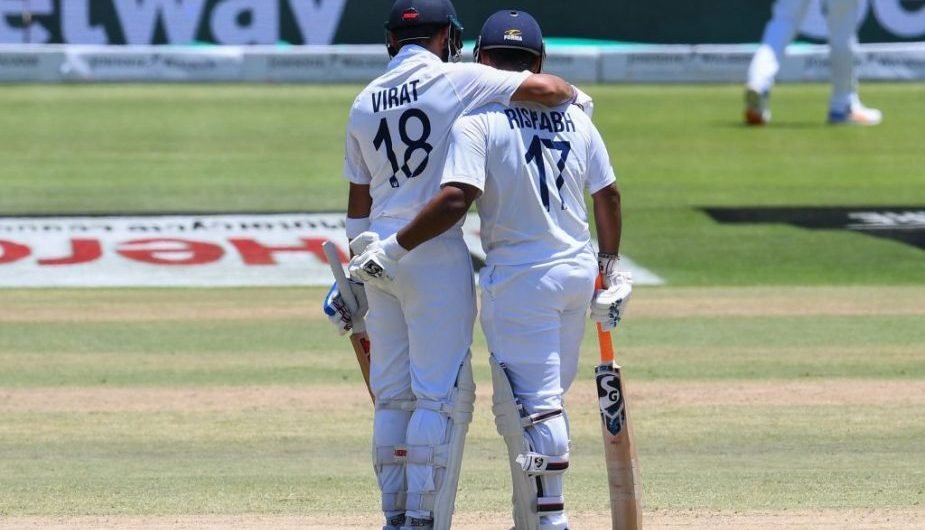There is a global shortage of young top-class Test batters

A notable aspect of England’s recent travails as a Test side has been the use of young batters, all of whom have encountered tough times.
In 2021, England employed at one time or another Ollie Pope, Dom Sibley, Dan Lawrence, Haseeb Hameed, Zak Crawley and James Bracey – all of whom began that calendar year aged 25 or under. All five were dropped during the year, with 10 half-centuries made between them from a total of 83 innings.
The search for promise continues; England have begun their summer with Crawley opening the batting and Pope at No.3.
But this does prompt the question: are there any young batters currently established as consistent operators within the Test game?
A look at the ICC Test batting rankings is revealing. At the start of this month (June 1, 2022), the rankings showed just one batter aged 26 or under in the top 30: Rishabh Pant, India’s 24-year-old keeper-batter.
The next batter on the list in the same age bracket was Pakistan’s Abdullah Shafique, who sat at No.33. Shafique, 22, impressed earlier this year in his side’s three-match series with Australia and averages 68.37 after five Tests. After that, the only batter aged 26 or under in the top 50 was Australia’s Cameron Green.
With this in mind, it’s worth having a look at how many young batters have in recent history sat in the top 30 of the Test rankings. For the sake of consistency, those falling into the ‘young’ bracket are aged 26 or under.
On June 1, 2000, there were six young batters in the top 30: Ricky Ponting, Jacques Kallis, Craig McMillan, Mohammad Yousuf, Shivnarine Chanderpaul, and Sadagoppan Ramesh. Ponting, at No.4, was the only player in that group to make the top 10.
On June 1, 2005, there were five young batters in the top 30: Virender Sehwag, Graeme Smith, Chris Gayle, Ramnaresh Sarwan and AB de Villiers. On this occasion, there were two of the group in the top 10: Sehwag at No.5 and Smith at No.10.
On June 1, 2010, there were just three young batters in the top 30: Ross Taylor, de Villiers and Alastair Cook. Taylor sat in the top 10.
Five years later, there came a resurgence. On June 1, 2015, there were nine young batters in the top 30: Steve Smith, Joe Root, Kane Williamson, Virat Kohli, Mominul Haque, Tamim, Darren Bravo, Ajinkya Rahane and Gary Ballance. Furthermore, four sat in the top 10: Smith, Root, Williamson and Kohli.
On June 1, 2020, there were five young batters in the top 30: Marnus Labuschagne, Babar Azam, Travis Head, Kusal Mendis and Aiden Markram. Labuschagne and Babar sat in the top 10, and both have excelled in the last couple of years. Labuschagne currently sits at the top of the rankings, while Babar is in the top five. But all of that group have grown older, moving into the 27 and over category.
As mentioned earlier, on June 1, 2022, Pant was the only young batter in the top 30, sitting at No.11.
Since the start of 2010, 2022 is the only year there has been just one young batter in the top 30 at the start of June. In that same period, there have been only two other years where there were three or fewer young batters in the top 30 at the start of June. As mentioned previously, there was 2010 (3), and in 2011 there were just two: Cook and Tamim. Yet Cook, 26 at the time, did at least sit in the top 10 at No.5.
What happens when we look at the ODI rankings?
On June 1, 2010, there were seven young batters in the top 30. Five years later, that number skyrocketed to 11 – accompanying the Fab Four were Glenn Maxwell, Quinton de Kock, David Miller, Jos Buttler, Tamim Iqbal, James Faulkner and Ahmed Shehzad.
On June 1, 2020, the number fell to five: Babar Azam, Imam-ul-Haq, Shai Hope, Shimron Hetmyer and Nicholas Pooran making up the list. Interestingly, those five players cover just two sides – Pakistan and the West Indies.
On June 1, 2022, there was just one: Imam-ul-Haq, who turns 27 in December this year. A change in formats has not resulted in a different result.
It’s worth a quick glance at the T20I rankings too. On June 1, 2010, there were 10 young batters in the top 30. Five years later, there were seven. On June 1, 2020, there were three. On that same date this year, there were four: Pathum Nissanka, Hazratullah Zazai, Pooran and Mohammad Naim.
The final say
Why this trend has appeared is a question which could take a whole book to answer; but the state of play across the globe is clear. While the mid-2010s saw the emergence of a number of consistent young batters in Tests and ODIs, led by the Fab Four of Virat Kohli, Kane Williamson, Joe Root and Steve Smith, a new generation has yet to emerge to replace them. When the latest issue of Wisden Cricket Monthly set about picking the next Fab Four, Pant was the only member of the selected quartet under the age of 27 (the others were Babar, Labuschagne and Devon Conway).
The magazine also pinpointed a number of batting talents with potential who could emerge in the next few years, including Green, Pope, Shafique, Nissanka and Hetmyer, as well as the likes of Mahmudul Hasan Joy, Shubman Gill and Dewald Brevis. These names may be the ones who bring some youthful exuberance to the top 30 across formats.

